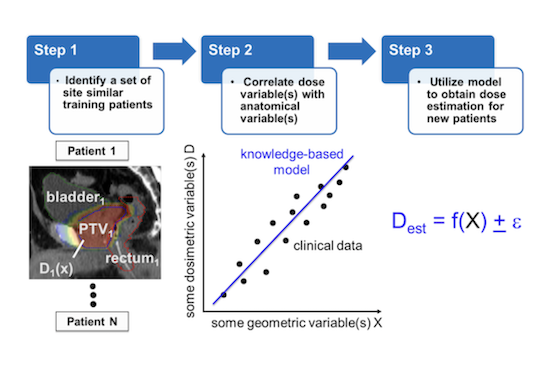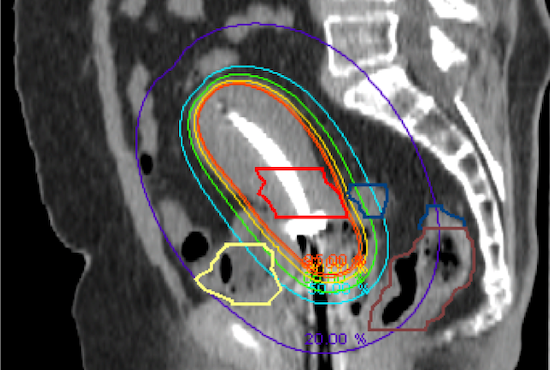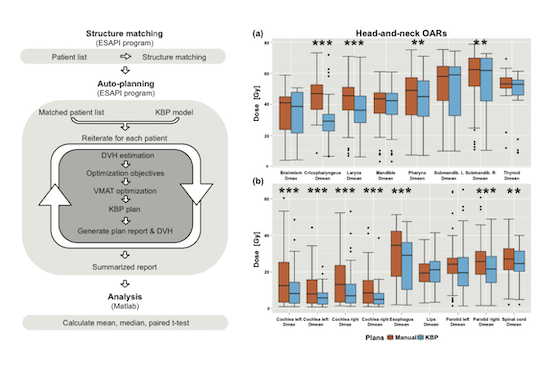Overview
UCSD has been a leader in developing and clincally implementing automation tools in radiotherapy. The aim of automation in radiation oncology is to utilize the capabilities of new computational and modeling methods to ensure the highest quality treatments for cancer patients while simultaneously reducing the resources required to deliver that care.
Knowledge-based external beam planning
UCSD has led the world in the clinical implementation of knowledge-based planning, an automated planning technique that utilizes the information of large sample of prior radiotherapy treatments to automatically design the treatment of new patients. In addition to facilitating more efficient treatment design processes, this technique has been shown by UCSD researchers to ensure higher quality treatment plans for patients.

Explore Related Labs
To learn more about how external beam knowledge-based planning is improving patient care, check out the following faculty labs:
Automated brachytherapy treatment planning
Because its delivery method is so distinct from external beam radiotherapy, brachytherapy presents a unique challenge for patient-specific dose estimation. This effort is dedicated to generating accurate knowledge-based dosimetric predictions in the service of distributed treatment plan quality control for GYN brachytherapy. We are also actively exploring automated planning techniques based on knowledge-based dose predictions, as well as three-dimensional dose estimation for both standard applicators and non-standard needle-based treatments.

Explore Related Labs
To learn more about how external beam knowledge-based planning is improving patient care, check out the following faculty labs: Check out Faculty Labs investigating brachytherapy automation:
Large-scale data mining
To answer the most critical questions of how automation is performing relative the standard processes, it is necessary to process an incredibly large amount of data efficiently. To "automate the automation," UCSD researchers have developed and are utilizing novel batch processing techniques which facilitate efficient retrospective analyses and the design of new processes that best leverage automation's capabilities.

Explore Related Labs
To learn more about how these data mining efforts are leading to new innovations, check out the following Faculty Labs:






